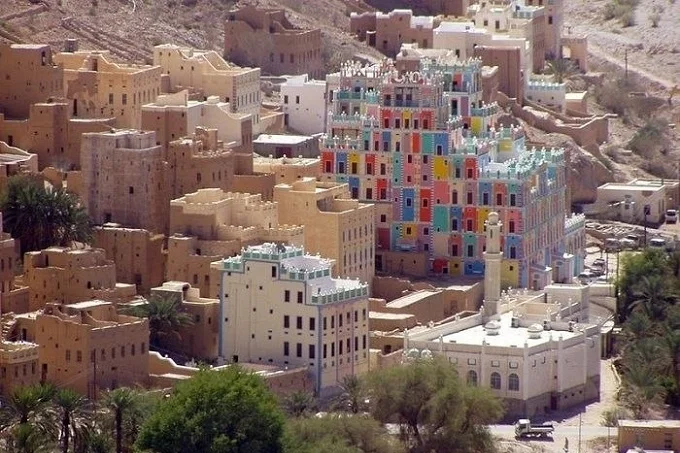Modern inhabitants are so accustomed to all the benefits of civilization that many of them simply can not imagine that somewhere in the desert, there are real cities built practically out of the mud.
It is in Yemen, in the middle of a lifeless landscape over the precipices of mountain peaks or in the lost plains, that such villages are found, made not of stone or cement, but of raw clay bricks. Every year the multi-story houses wash away during the short-lived rainy season, and the inhabitants persevere in rebuilding them. What you see is breathtaking.
With the exception of the coastal valleys near the Red Sea, the topography of the country of Yemen is characterized by arid mountainous areas. The seasonal river valleys called the Wadi occupy a special place among them.
They fill with water only during the rainy summer months, while they are dry at other times of the year. The most famous of these are Wadi Hadramut and Wadi Dawan. Entire villages and towns with multi-storied mud houses have been built on the plateau.
On the plateau, which has risen some 200 meters above the valley level, is the village of Haid Al-Jazil. It literally resembles a movie set for the adventures of Indiana Jones. The houses seem to be about to fall off a cliff, taking the lives of their doomed inhabitants with them. But this is only the first impression of uninformed tourists. In fact, Haid Al-Jazil has stood on this spot for more than 500 years. The residents keep an eye on the condition of the clay buildings and repair them immediately if necessary.
Listing the unique towns of Wadi, we cannot help but dwell on Shibam, which was founded in the 16th century. It’s very surprising to see such architecture in the middle of lifeless sands, but the height of each of the houses is from 6 to 11 floors! Not for nothing, this place is called the “Manhattan of the desert”.
Like any other medieval city, Shibam was surrounded by a fortress wall. But over time, the population grew larger and larger, so the houses grew not wide, but tall. Amazingly, you can still count about 500 multi-story residential buildings in the city.
Clay bricks and wooden floors were the basic building materials of the unique dwellings. It is worth noting that these buildings are constantly being repaired, as, during the rainy season, many facades are simply washed away.
The village of Al-Khurayba is a real eye-catcher. From afar, the traditional houses look like colorful squares of a patchwork quilt. The houses owe this facade to a Saudi businessman who spent his childhood in Al-Khurayba. In addition, the patron also built several new schools and hospitals in the village.
Not all of the ancient cities have been spared. Many architectural monuments of world fame cannot be seen today for a number of reasons. From these 15 ancient cities, which no longer exist, only ruins and annalistic memories remain.
